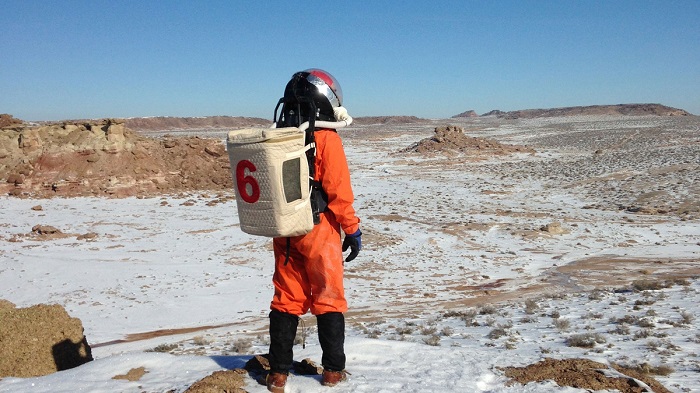.

Outfitted in bright orange spacesuits and a full pack of oxygen, three astronauts push open the foot-thick door and step outside onto the rusty red landscape. Though it's zero degrees Fahrenheit outside, they're pouring sweat as they push their way toward the plunging cliffside a half mile away. With civilization a world away, the astronauts have only one mission this very moment: stay alive.
We're not on Mars. We're in the middle of the freezing desert of southeast Utah in December, where Mashable followed a six-person team living in a tiny habitat called the Mars Desert Research Station (MDRS). Every two weeks during the winter, crews like this pay $500 each to rent the module and conduct experiments as though they were living on the Red Planet.
The MDRS is operated by The Mars Society, a group of volunteers around the world who support the idea of putting humans on Mars. Robert Zubrin founded The Mars Society in the 1990s after NASA rejected his “Mars Direct” proposal laying out a lower-cost plan for a manned mission to the Red Planet.
This simulation isn’t perfect. You have to suspend your disbelief quite a bit in order for it all to make sense, but that’s exactly what Zubrin wants—an experience that the pros can eventually build upon.
“I would like nothing better than for NASA to copy us and say, ‘OK, we see what you're trying to do here, but your simulation is primitive. We can do this much more realistically. Step aside.’ Then they can leave us behind. And maybe we'll keep doing it, or maybe we won't.”
In reality, it’s nothing like Mars. We could take off our helmets and still breath in oxygen. Our bodies don't have to adjust to 40% gravity. We're not in danger of harmful radiation due to the thin atmosphere. But there’s one thing the MDRS does get right — Mars is inconvenient as hell. Mars is uncomfortable. Mars doesn’t care if you sleep. Mars doesn’t supply you with drinking water. Mars doesn't consider your bulky spacesuit. You are nothing but a crumb on Mars.
Quelle: Mashable
